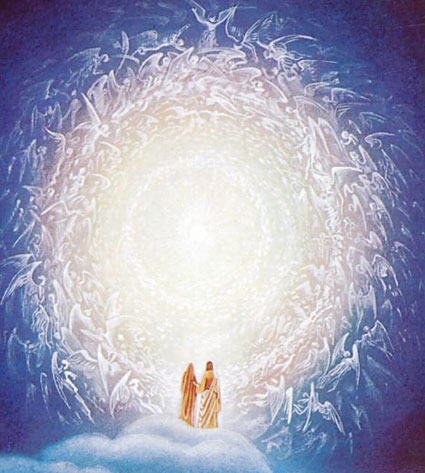The Context of Drawing Near
Then He said, “Do not draw near this place. Take your sandals off your feet, for the place where you stand is holy ground.” Exodus 3:5
A sacrifice is literally a nearbringing. James Jordan suggests that instead of sacrifice or offering, a better translation of the word qorban would be “nearbringing”:
“The English “sacrifice” tends to connote the idea of giving something up for someone else. That has little if anything to do with qorban. “Offering” tends to connote a gift, which again has nothing to do with qorban. The word means to draw near, to get into close relationship with someone, and it is used only in relationship to God. We do not worship God by giving Him anything, for He needs nothing. We do not worship God by giving up anything good, for He is the one who has given us all good things. We worship God by drawing near to Him.” [1]
The first nearbringing was the marriage Covenant between Adam and Eve. There was blood when Adam was “divided” so that Eve might be “constructed.” [2] And we can assume that when Adam and Eve were first physically united there was also blood.
When Moses stood before the Lord on the mountain of God in Exodus 3, there was no blood. He could not draw near. Moses was to be the “head” of a New Covenant. When he stood with the elders on the mountain later on, as head of the new state, the “body of Moses”, there was blood. The passage follows the feasts:
Sabbath – The call to climb the mountain and worship from afar
Passover – Moses and the elders are a human firmament,
mediating between heaven and earthFirstfruits – Moses alone shall come near the Lord (head – Adam)
Pentecost – Moses tells the people the commandments
and the people agree to obey themTrumpets – The altar and twelve pillars are built (body – Eve)
Atonement – Half of the blood is sprinkled on the people
Booths – Moses and the elders feast before God in peace. The glory-cloud rests on the mountain
This is the context of Jesus’ quote in Matthew 15:
“These people draw near to Me with their mouth, And honour Me with their lips, but their heart is far from Me.”
This “At-one-ment” is also the context of the apostles:
“…for the law made nothing perfect; on the other hand, there is the bringing in of a better hope, through which we draw near to God.” Hebrews 7:19
“…let us draw near with a true heart in full assurance of faith, having our hearts sprinkled from an evil conscience and our bodies washed with pure water.” Hebrews 10:22
“Draw near to God and He will draw near to you. Cleanse your hands, you sinners; and purify your hearts, you double-minded.” James 4:8
For Eve to be brought near, she too must be divided. There are always two goats.[3]
For the apostles to draw near to God, they too would have to present their own blood. They could only do so under the “firmament”, the covering of the “head” (bull’s blood), but they were required to nonetheless. Their blood, with His, would complete the construction of the New Jerusalem, ready for the nations to enter. [4]
In AD70, a new Adam and new corporate Eve were united at the marriage supper of the Lamb. They were united over the blood of the old Herodian Adam and the old Herodian Eve. The gospel is a sword that divides and unites to make a new world full of godly offspring.
“I am jealous for you with godly jealousy. For I have betrothed you to one husband, that I may present you as a chaste virgin to Christ. But I fear, lest somehow, as the serpent deceived Eve by his craftiness, so your minds may be corrupted from the simplicity that is in Christ.” 2 Cor. 11:2-3
____________________________________________
[1] James B. Jordan, Leviticus 1:2.
[2] See Peter Leithart, Bridal City.
[3] See the Significance of Adah and Zillah.
[4] See Suffering Servants.


























